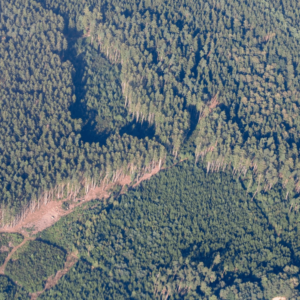While the Northern Hemisphere faces a record heat wave during the summer, in the extreme south, in the middle of winter, another worrying climate record is being broken. Antarctic sea ice is reaching unprecedented levels for this time of year.
Traditionally, Antarctic sea ice decreases to its lowest levels in late February, during the continent's summer, and then builds up again during the winter. This year, however, scientists observed something different.
Sea ice has not returned anywhere near expected levels. In fact, it's at the lowest levels for this time of year since records began 45 years ago. According to data from the National Snow and Ice Data Center (NSIDC), the ice is about 1.6 million square kilometers (0.6 million square miles) below the previous winter record set in 2022.
As of mid-July, Antarctic sea ice was 2.6 million square kilometers (1 million square miles) below the average from 1981 to 2010. That's about as big as Argentina or the states of Texas combined. , California, New Mexico, Arizona, Nevada, Utah and Colorado. The phenomenon has been described by some scientists as exceptional, something so rare that the chances of it occurring are once in millions of years.
Antarctica is a remote and complex continent. Unlike the Arctic, where sea ice has consistently declined as the climate crisis accelerates, Antarctica's sea ice has fluctuated between record highs and lows in recent decades, making it harder for scientists to understand how it is responding to global warming. .
But since 2016, scientists have been observing a sharp downward trend. While natural climate variability affects sea ice, many scientists point out that climate change could be a major driver of the ice's disappearance.
The Antarctic system has always been highly variable and this level of variation, however, is so extreme that something radical has changed in the last two years, especially this year, relative to all previous years, at least in the last 45 years, according to data of the NSIDC.
Several factors contribute to the loss of sea ice, according to Scambos, including the strength of the westerly winds around Antarctica, which have been linked to increased pollution that warms the planet.
Still according to the NSIDC, the warming of ocean temperatures north of the Antarctic oceanic limit, mixing with water that is normally isolated from the other oceans of the world, is also part of this idea to explain the phenomenon.
In February of this year, Antarctic sea ice reached its lowest extent since records began, at 691,000 square miles. This winter's unprecedented phenomenon could indicate a long-term shift to the isolated continent and it is more likely that the Antarctic system will not recover to the same way it did, say, 15 years ago, for a long time in the future and possibly never. more.
Sea ice plays a vital role in the planetary ecosystem. While it does not directly affect sea level rise, as it is already floating in the ocean, it does have indirect effects. Their disappearance exposes coastal ice sheets and glaciers to waves and warm ocean waters, making them more vulnerable to melting and break-off.
The lack of sea ice could also have significant impacts on wildlife in the region, including krill, which many whales eat, as well as penguins and seals, which rely on sea ice for food and rest.
More broadly, Antarctic sea ice contributes to regulating the planet's temperature, meaning its disappearance could have ripple effects far beyond the continent. Sea ice reflects the solar energy that falls on it back into space, but when it melts, it exposes darker ocean waters that absorb the sun's energy. This could result in an increase in global warming and influence the climate globally.
Parts of Antarctica have been experiencing alarming changes for some time. The Antarctic Peninsula, a chain of ice mountains that extends to the west side of the continent, is one of the fastest warming places in the Southern Hemisphere.
Last year, scientists warned that the vast Thwaites Glacier, also known as the "Doomsday Glacier", was "holding on by its nails" as the planet warms. The complete instability of this glacier could lead to a sea level rise of around 3 meters, devastating coastal communities across the world.
Scientists will continue to closely monitor this situation to better understand its implications and consequences for the global climate and Antarctic ecosystems. Understanding changes in sea ice is essential for devising strategies to mitigate climate change and protect the environment.
The accelerated melting of sea ice in Antarctica is an urgent reminder that the climate crisis knows no borders and affects every corner of the planet. Coordinated and effective actions are needed on a global scale to reduce greenhouse gas emissions and limit global warming, to protect not only Antarctica, but also the future of our planet.













